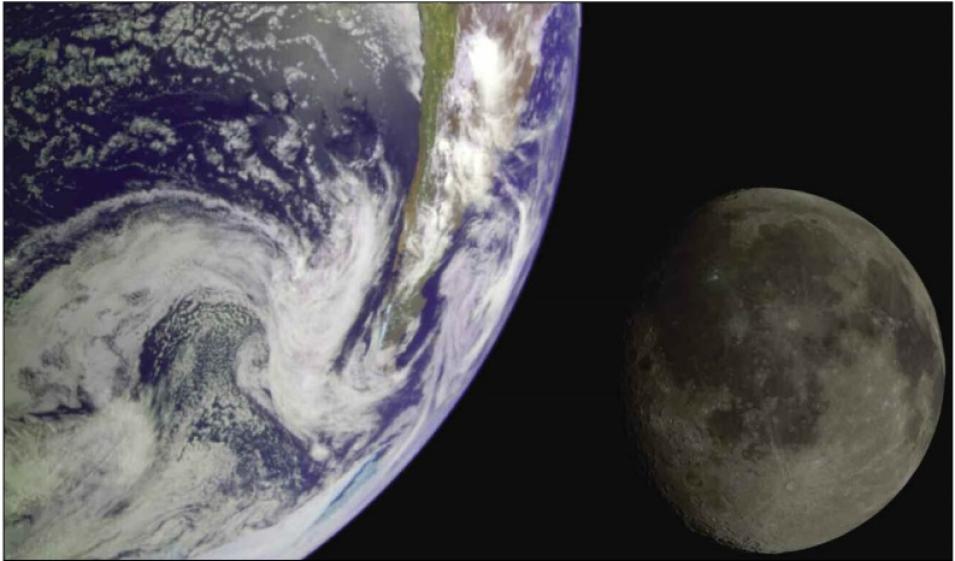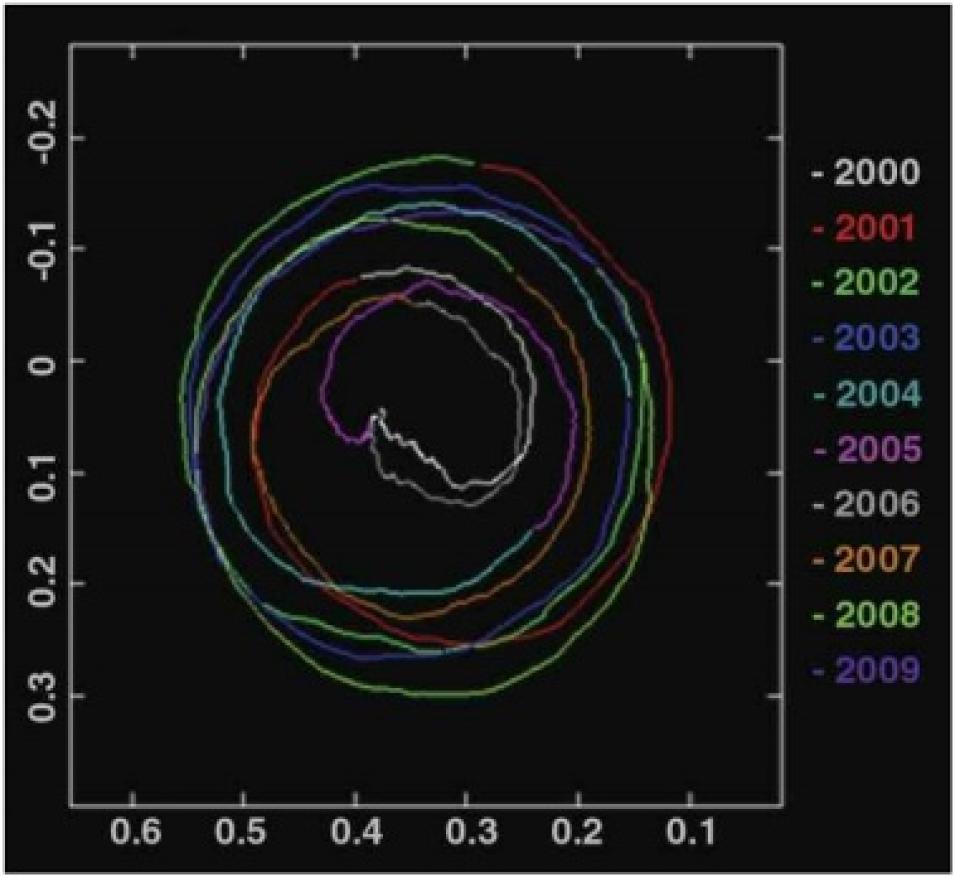Imagine spinning around in a circle, with a ball in your hand. If you want to hit a target with the ball, you need to predict when you will be facing the target, so that you know when to throw. This is not unlike the problem of launching a spacecraft from the rotating Earth to land on the moon, an average of 239,000 miles away.
Today, precise EOP predictions support longer space journeys and direct landings on Mars, about 34 million miles from Earth at the closest points in the orbits of the two planets around the Sun. Gross said, “When you want to directly land a rover on Mars, uncertainties in Earth’s rotation can be a problem. For a precise pinpoint landing, you have to do your best to predict how the Earth will be oriented in the future as the spacecraft approaches Mars. Because of the large distances involved, small millisecond changes in the length of day become kilometer-sized position errors by the time you get to Mars.”
Gross’s research uses several kinds of data from the archives of NASA's Crustal Dynamics Data Information System (CDDIS), including Global Positioning System (GPS), satellite laser ranging, and very long baseline interferometry. Each of these position-measuring technologies has different coverage and advantages, and by combining and comparing them, Gross can get the most accurate estimates. Using computer models, he can then specify the Earth’s orientation at any point in the past or future.
Where on Earth
Here on Earth, tiny spin and wobble variations also have consequences even over just the distance between the poles and the equator. Brian Luzum, at the U.S. Naval Observatory, said, “I’m concerned with very practical matters of Earth orientation, like knowing exactly where we are on the ground or the ocean.” An aircraft heading for landing on an aircraft carrier on a foggy night, for example, would like to know very exactly the position of that ship.
Luzum specializes in EOP predictions for navigation and positioning, which depend on GPS systems. GPS receivers triangulate their location from a constellation of satellites orbiting overhead. Luzum said, “A GPS receiver on the ground needs to know how it is oriented to the satellite in space, so it needs these EOPs.” The EOPs make the GPS coordinates much more accurate.
“You can essentially turn this into a geometry problem, a large scale surveying problem, one that is constantly changing,” Luzum said. “A thousandth of a second difference in rotation speed may seem like a ridiculously small amount of time, but it can translate to about fifty centimeters of distance at Earth’s equator. And if you accumulate the length of day variations over a number of days, it can add up to many, many meters. If you can’t navigate within a fraction of a kilometer, it is a real problem.”
His work depends on Gross’s studies of length of day. He said, “Richard takes something complicated and breaks it into less complicated parts. His research tells us how global weather and ocean changes work together.” Atmospheric pressure changes and changes in ocean bottom pressure also affect Earth’s rotation. “Because people like Richard have figured out these effects, we can use weather forecast data in our EOP predictions,” Luzum said.
Gross continues to work on directly measuring the effects of earthquakes, atmosphere, and oceans on length of day, using satellite data, for an even more refined prediction of Earth’s rotation. He said, “These changes are so small, most people don’t worry about them, but we worry about them.”
References
Gross, R.S. 2007. Earth rotation variations - long period. In Physical Geodesy. Ed. T.A. Herring, Treatise on Geophysics, vol. 11. Amsterdam: Elsevier.
Gross, R.S. and B.F. Chao. 2006. The rotational and gravitational signature of the December 26, 2004 Sumatran earthquake. Surveys in Geophysics 27(6): 615-632, doi:10.1007/s10712-006-9008-1.
Luzum, B. and A. Nothnagel. 2010. Improved UTI predictions through low-latency VLBI observations. Journal of Geodesy, doi:10.1007/s00190-010-0372-8.
Noll, C. 2010. The Crustal Dynamics Data Information System: A resource to support scientific analysis using space geodesy. Advances in Space Research 45(12): 1,421-1,440, doi:10.1016/j.asr.2010.01.018.
For more information
NASA Crustal Dynamics Data Information System (CDDIS)
United States Naval Observatory - Earth Orientation
| About the remote sensing data used |
| Satellites |
Global Positioning System (GPS) |
Laser Geodynamics Satellite 1 (LAGEOS-1) |
|
| Sensors |
GPS receivers |
LAGEOS-1 Satellite Laser Ranging (SLR) Data |
Radio telescopes, radio sources |
| Data sets |
GPS Data Archive |
500 meter Nadir BRDF-Adjusted Reflectance (NBAR) |
Very Long Baseline Interferometry |
| Resolution |
1 second |
Global coverage |
|
| Parameters |
Latitude and longitude |
Earth orientation |
Earth rotation |
| DAAC |
NASA Crustal Dynamics Data Information System (CDDIS) |
NASA CDDIS |
NASA CDDIS |


